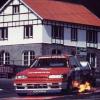Announcements
-
Similar Content
-
Latest Posts
-
By GoHashiriya · Posted
Vanos solenoid problems and basically all sensors die an early death -
Yep, back in the day when you could pick up a Stagea RB25 NEO for $1,500 it was worth it. These days... just chuck your V8 or B58 in.
-
from my limited BMW experience: - they burn oil WTF (B48 FTW 170kW engine) - dump oil every 5,000km and you'll be ok.. until it drops a bearing and rebuild time. replace engine with B58
-
By Dose Pipe Sutututu · Posted
I would avoid the AWD motor in a RWD using a modified RWD sump and pickup. The way the pick up is positioned, you'll have oil pick up issues on hard acceleration on a track around bends. Even with a baffled, gated sump. I suppose if you don't race on a track and it's used for straight line activities or street use you might be ok. -
By GoHashiriya · Posted
They absolutely are, but the thing is, if you're only exposed to these circuits for a while, what I normally think is good driving suddenly isn't so much. I was a pussy at the Nurburgring (GP) entering corners at 180kph - the difference in the balance of the car suddenly becomes so much more pronounced and I'm still a bit regarded at left-foot braking - something I now practice on my commute. So the (dream) plan with the E90 is to make it a 325i Cup car. Whether I get there or not is another matter. In my mind the simplicity of having the NA variant and cost made it a bit more appealing. Plus, like mentioned above, I'm actually too much of a pussy for big power. Of course I f**ked up by not researching enough on the N53 vs N52, the latter being more robust without the DI system. Suspension-wise on the BMW, and I've been reading the technical requirements for the 325i cup, basically everything except struts has to be standard - bushes are free. I figure you get about 5-10mm adjustment with the rear camber bolts which should translate to 0.5- 1.5 degrees of adjustment. So with coilovers, lowered at 30/40mm I expect I can dial out some of the camber from a drop and attain -1.5 to -2. If necessary, I could get the same effect as the M3 arms with some offset bushes. There is a limitation on ARB width to qualify, although I absolutely want to get either M3 ARBs (can't say sway incase I upset GTSBoy) or the H&R ones - both of these are the cheapest options. Like mentioned, M3 arms are on the way and I should have them fitted within the next week. How are the BC Racing coilovers btw? Reviews are mixed but I think for me they would be fine; a friend of mine uses them on his R34 for track driving and has nothing bad to say. I'm looking at these or the ST coilovers (German brand, new to me) as prescriped the in Cup spec sheet. They're both similarly priced and offer camber adjustment. It's fine but it really upsets my OCD. I've got a couple of options for dialing out the rear camber and keeping my ill-fitting wheels: raise the rear a little bit, say 5mm, that should permit -2.5 camber or drop the front to restore that slight bias of more negative camber up front (not optimal with the roads here). The next alignment won't be until at least next year and I really need to rebuild the rear subframe. For now, I'm not using it at all on the streets except occasional blasts through the German countryside. I was covering about 10k kms p/year in Japan, I expect this to now be about 3-4k. You could say buy better sized wheels, and yes, I should have. But the wheels came from the Z and price of good wheels is just insane now. Again, a couple of options: get a new set (I want 17" RPF1s) or buy two used 9.5J TEs, both are about the same price excluding shipping.
-







Recommended Posts
Create an account or sign in to comment
You need to be a member in order to leave a comment
Create an account
Sign up for a new account in our community. It's easy!
Register a new accountSign in
Already have an account? Sign in here.
Sign In Now